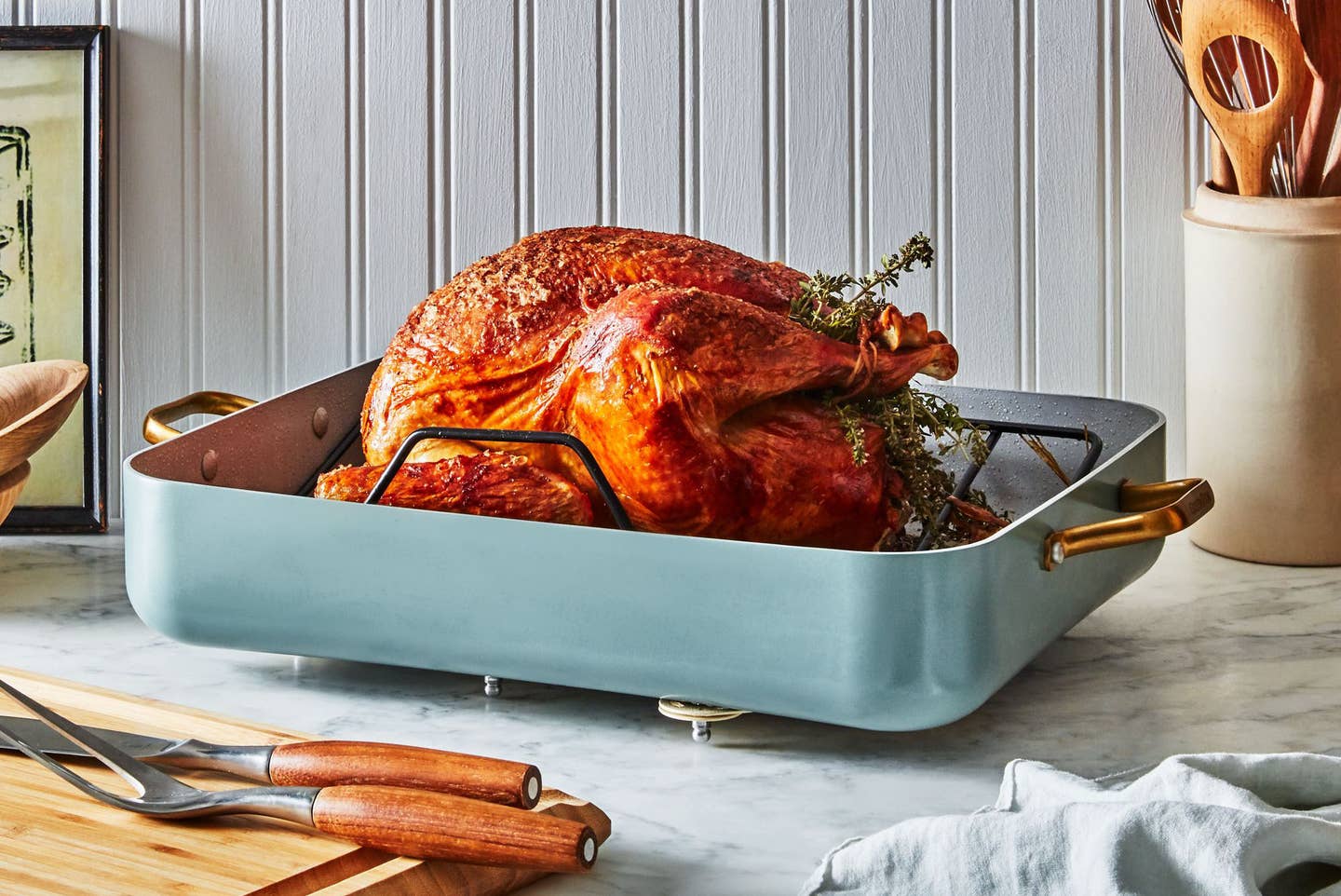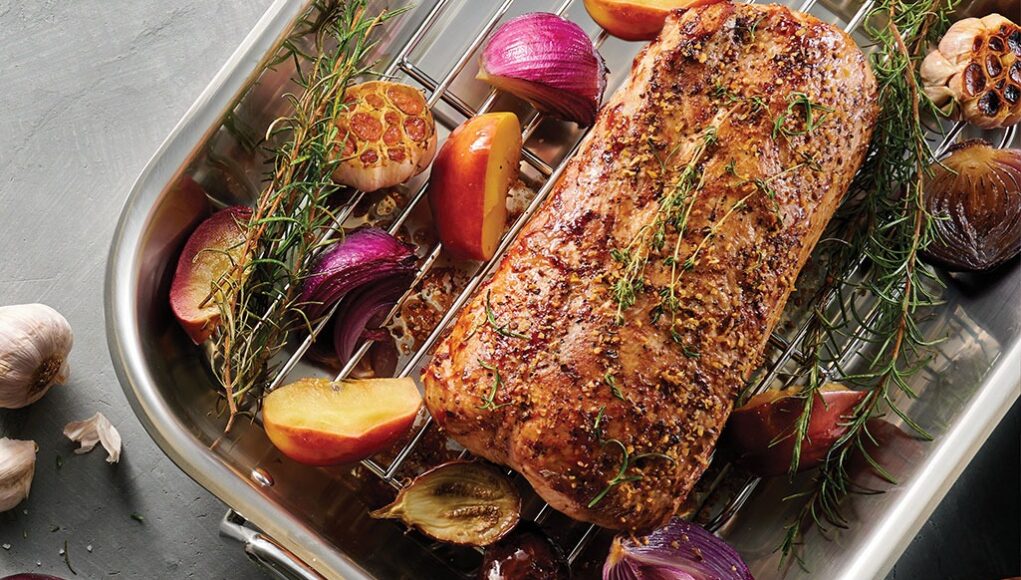Preparing a prime rib roast is a culinary delight, but how you place the meat in the roasting pan can make a huge difference. How to place prime rib in roasting pan its here, let’s delve into it.

Why Prime Rib Deserves Special Attention
Prime rib, also known as standing rib roast, is a choice cut of beef that’s celebrated for its tenderness and flavor. As such, it requires special techniques to bring out its best qualities.

Understanding The Prime Rib Cut
To know how to perfectly position your prime rib, it’s important to understand the cut itself. Prime ribs are cut from the primal rib section of the beef, and each rib adds to the flavor.
Types of Prime Rib Cuts
Prime rib can be categorized into several cuts, each with unique characteristics. For instance, the standing rib roast, a favorite for many, stands on the rib bones as it cooks, allowing the meat to self-baste and retain juices.

The Role of a Roasting Pan
The roasting pan isn’t just a cooking vessel; it’s an integral part of the roasting process. A good roasting pan helps in achieving even cooking and collecting drippings for sauces.
Choosing the Right Roasting Pan
Selecting the ideal roasting pan is crucial. Look for one with sturdy walls and sufficient depth to accommodate the size of your prime rib. A pan with a basting rack would be excellent, ensuring the meat cooks evenly.
this roasting pan can be a good choice.
Preparing Your Prime Rib for Roasting
Before placing your prime rib into the roasting pan, prep the meat properly.
Bringing the Meat to Room Temperature
It’s recommended to let your prime rib rest at room temperature for at least an hour before roasting. This ensures even cooking and a perfect finish.
Seasoning Your Prime Rib
A well-seasoned prime rib reaches the pinnacle of deliciousness. Use a blend of herbs, spices, garlic, and a good amount of salt to augment its flavors.
How to Place Prime Rib in Roasting Pan
Here comes the quintessential partpositioning the prime rib in the roasting pan.
Fat Side Up
Place the prime rib with the fat side facing up. This allows the fat to render down through the meat as it cooks, preserving all moisture and adding flavor.
Using a Roasting Rack
A roasting rack is highly recommended. Place the prime rib on the rack so it is elevated above the pans bottom. This allows for better air circulation and even cooking.
Alternative Methods
If you dont have a roasting rack, you can create a makeshift one using carrots, celery sticks, and onions as a bed for the meat.
Roasting Techniques
Different roasting techniques can influence the final outcome of your prime rib.
Slow Roasting
Slow roasting at a low temperature is a favored method for ensuring tender, evenly cooked meat. Roast the prime rib at 250F until it reaches your desired temperature.
High Heat Roasting
High heat roasting involves cooking the prime rib at 450F for the first 30 minutes to develop a crust, then lowering the temperature to 350F to finish cooking.
Monitoring Internal Temperature
Using a meat thermometer is crucial for achieving perfect results. Insert the thermometer into the thickest part of the meat, avoiding bones, to track the internal temperature.
Ideal Internal Temperatures
– Rare: 120-125F
– Medium Rare: 130-135F
– Medium: 140-145F
– Well Done: 160-170F
Resting the Prime Rib
After roasting, it’s essential to let the prime rib rest. This allows juices to redistribute, ensuring each slice is moist and flavorful.
How Long to Rest
Rest the prime rib for at least 20-30 minutes under tented aluminum foil.
Carving the Prime Rib
Proper carving techniques make a world of difference in presentation and taste.
Removing the Bones
Run a knife along the ribs to separate the meat, then slice the prime rib against the grain for tender, delicious pieces.
Serving Suggestions
Pair your prime rib with classic sides like mashed potatoes, roasted vegetables, or a fresh salad for a complete meal.
Explore different serving ideas from this article for more insights.
Storing Leftovers
Store any leftover prime rib in an airtight container in the refrigerator for up to 3-4 days.
Check out our guide on storing leftovers for more tips.
Reheating Prime Rib
Reheat your leftover prime rib gently to maintain its flavor and texture.
Oven Method
Preheat the oven to 250F, place the prime rib in a roasting pan with a bit of beef broth, and cover it with foil. Heat for about 20-30 minutes or until warmed through.
Stovetop Method
You can also reheat slices of prime rib in a skillet over low heat with a splash of broth.
Common Mistakes to Avoid
Avoid these mistakes to perfect your prime rib roast:
Skipping the Rest Period
Letting your prime rib rest is crucial for juiciness. Don’t skip it!
Overcooking
Use a meat thermometer and carefully monitor the internal temperature to avoid overcooking.
Under Seasoning
A good amount of seasoning enhances the natural flavors of the prime rib. Don’t be shy with herbs and spices.
FAQs
What is the best roasting pan for prime rib?
Look for a sturdy roasting pan with high sides and a roasting rack. Learn more here.
Should the prime rib sit on the bottom of the pan or a rack?
Always use a roasting rack to elevate the prime rib, allowing for better air circulation and even cooking.
How do I know when my prime rib is done?
Use a meat thermometer to check the internal temperature. Aim for the desired doneness: Rare, Medium Rare, Medium, or Well Done.
As an Amazon Associate, I earn from qualifying purchases.
As an Amazon Associate, I earn from qualifying purchases.









